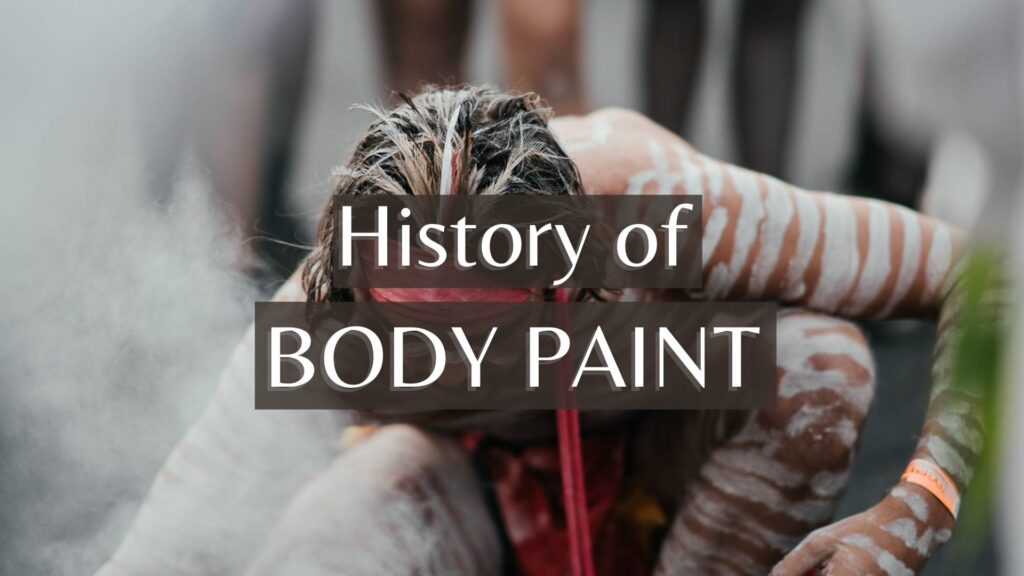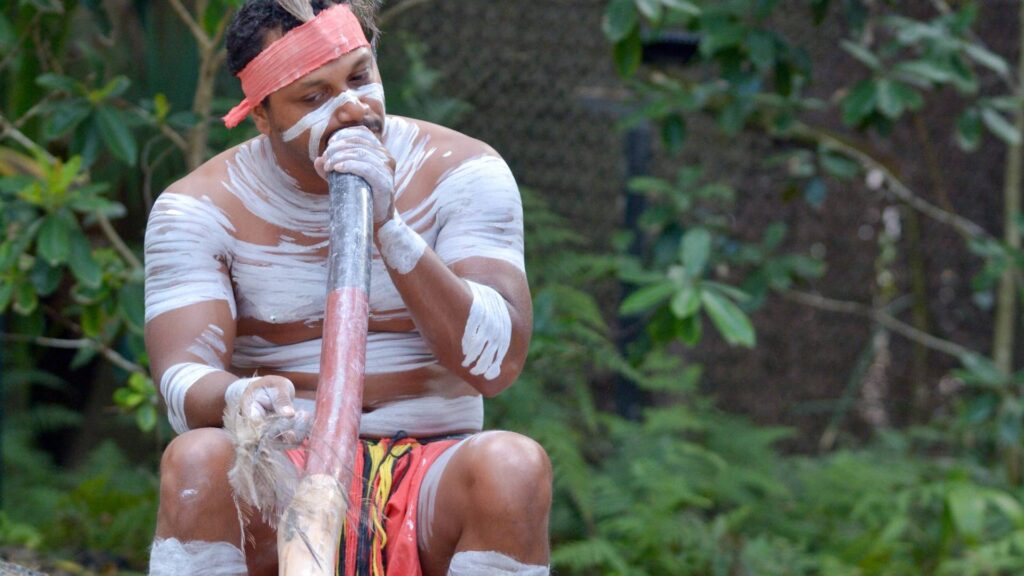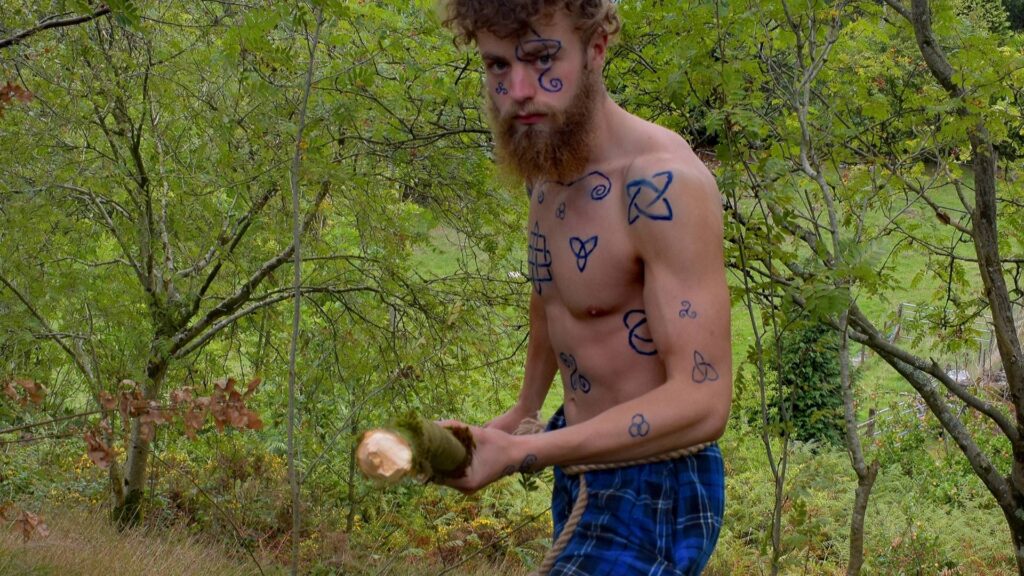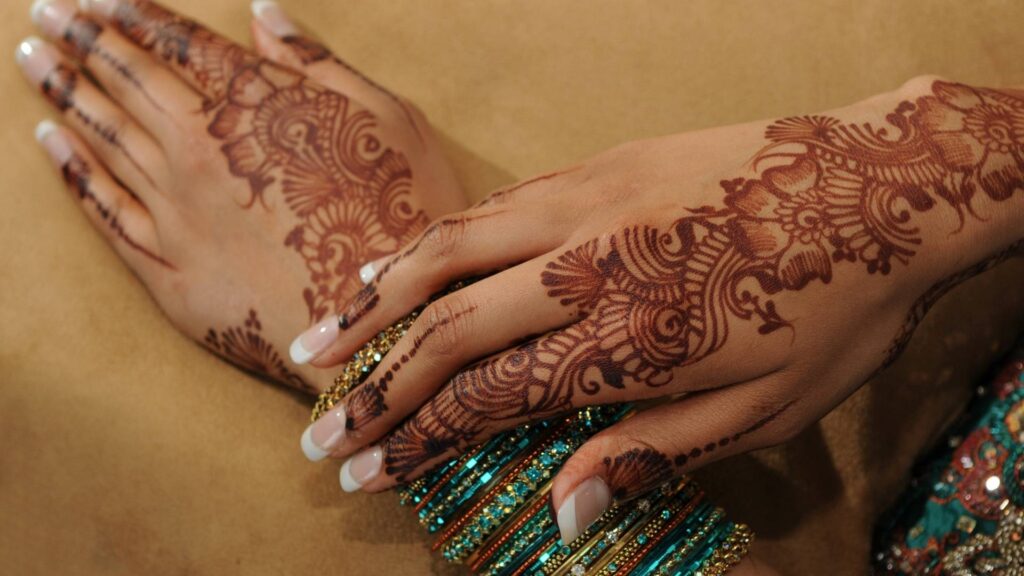Body paint has a rich history that spans back to ancient times. From days of antiquity, people decorated their bodies for various rituals – spiritual, war, wedding ceremonies, celebrations, and more.
I had already been bodypainting for many years before I realized I didn’t know a thing about the history of body paint or when it started. I wanted to find out the origins of body paint – where it comes from when it started, and why people have done it before modern times.
So I decided to do a little research and here’s what I found out:
Body painting likely started about 400,000 years ago. Archeological evidence suggests that body paint was used in ritual practice by hunter-gatherer tribes in Zambia.
While hundreds of thousands of years ago is so long that it is hard to contemplate, it makes sense that someone decided to smear some colored materials on their skin at some point.
As it turns out, many ceremonies, rituals, and spiritual practices revolved around the usage of body paint over millennia.

The Origins of Body Paint
Hunter-gatherer tribes in Africa likely used body paint hundreds of thousands of years ago. So we can safely assume that this is the “origin” of the first body paint.
However, body paint also pops up in history across various ethnicities, time periods, and locations. While the tradition was passed down through generations in some instances, in other cases, it could also be said that body paint was independently initiated.
Take for example the rich history of aboriginal body paint. North American and Australian tribes passed down their traditions verbally from generation to generation. The origin of these traditions could potentially span back thousands of years before the period of European colonization.
On the other hand, the Celtic practice of body painting was recorded by Roman writers around the turn of the anno domini – only 2000 some years ago, but almost certainly spawning independently from the North American and Australian aboriginal body painting practice.
So in a sense, the origins of body paint come from many different times and places.
Australian Aboriginal Body Paint

Australian aboriginal bodypainting is a deeply spiritual practice. The tradition of body paint and its specific guidelines has been passed down for thousands of years within many tribes on the Australian continent.
There are many diverse tribes across the wide expanse of the Australian continent, and all use unique patterns, colors, and styles.
However, many have similarities in using very bright colors including pink, red, yellow, and white. Clay and animal fat is also commonly used to make the body paint stay on the skin.
The significance and purpose of Australian aboriginal bodypaint include:
- initiation ceremonies for young boys
- indication of clan or lineage
- women’s ceremonies
- funerals
- Religious symbolism
- Spiritual storytelling
- indicating social status or age
- hunting ceremonies
With such a rich history of body painting, it is an unfortunately common story to see aboriginal culture become faded and lost in post-colonial times.
Luckily, there is a healthy effort to preserve some of the body painting traditions of the past.
Here’s a great modern example of a photographer helping preserve aboriginal body painting culture. Check out Trent White capturing aboriginal Kayleen Adidi in this stunning photoshoot.
Celtic War Paint

The film Braveheart starring Mel Gibson brought to prominence the notion of blue Celtic war paint. In the film, iconic battle scenes display Gibson’s character, William Wallace, leading his Scottish brethren into battle sporting bright blue face paint.
But how accurate is the film in its depiction of war paint used by the Scottish in this time period?
As it turns out, blue bodypaint WAS used in battle by the Celts, except over 1000 years earlier!
While the First War of Sottish Independence was fought in early 1300 AD, a specific Celtic tribe called the “Picts” who used blue body paint had long been extinct from the historical record.
Scottish writer, Peter Traquair points out this inaccuracy in his book Freedom’s Sword: Scotland’s Wars of Independence.
The depiction of blue Celtic war paint comes from Roman accounts of battle back around 300 AD. This is the time period when an ancient Celtic tribe called the Picts reportedly fought the Romans in battle, stark naked save for elaborate designs painted on their skin with blue woad.
Woad was used in ancient times mainly as a pigment for clothing and threads. Although it also had medicinal benefits and was sometimes used for treating various ailments.
There is some dispute about WHY exactly the Celts painted their bodies blue. I did some research to get to the bottom of this and here’s what I found out:
The common consensus is that Celts painted their bodies blue as a war ritual and to strike fear into their enemy’s hearts. However, another theory is that woad was used to treat battle wounds and, consequently, the blue pigment stained their skin.
Whatever the reason, this particular form of body paint gave the Celtic Picts a historical reputation – even the name the “Picts” roughly translates to “Picti” in Latin which means “the painted ones”.
Here’s a cool article that I found teaching you how to make your own body paint out of woad!
Henna

Henna is a popular body painting technique that stains the skin a reddish-brown. Its staining properties come from the henna plant, which is crushed up and mixed into a paste for application.
The origins of this kind of body art are a little foggy because its usage is so widespread in many parts of the world throughout history.
However, a common claim is that henna body paint was first observed some 9,000 years ago in ancient Egyptian culture. It was used by Egyptian royalty for decoration and ceremonial purposes.
Since then, many different cultures across the middle east, India and even Northern Asia have adopted its usage.
Henna came to India sometime in the 1400s. It became an integral part of Hindu culture over the following centuries.
Today, Hindus use henna in the “Mehndi” ceremony (Mehndi basically means marriage). In this ceremony, the woman becoming married uses henna body paint to adorn herself with sacred patterns with religious significance
Hopefully, this article has given you a little insight into the history of body paint. Researching it was certainly illuminating for me.
The art form has definitely transformed since the days of old. But as body painting artists of today, we can certainly take inspiration from our ancestors and infuse the beauty and spirit of ancient body paint into our art.


